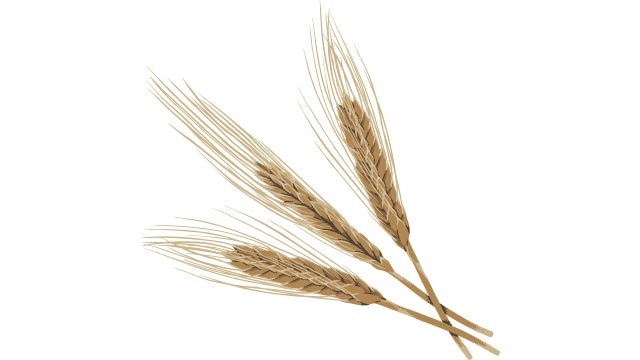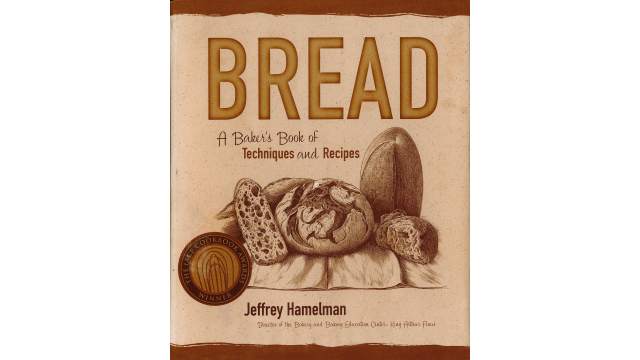The Tao of Dough

The first time I used flour ground from Sonora wheat a decade ago, I did so without grand expectations. I was becoming familiar with the work of a small group of farmers and millers focusing on heirloom grains, and knew very little about the Sonora variety they were producing. I didn’t know what it tasted like, its gluten content, or which recipes it would be best for. I didn’t even know why it had a Spanish name.
Alex Weiser grew the wheat on his farm two hours from where I live in Los Angeles. It was shipped to South Carolina and milled by grain pioneer Glenn Roberts at Anson Mills, and then sent back to my home kitchen so I could test it and share my impressions.
I opted to make a rustic loaf of bread. I learned a lot from the first experience. It turned out that Sonora is a soft wheat — not ideal for making bread. Despite this, the results did not disappoint. The loaf was dense and somewhat flat, not as airy or lofty as the breads I baked regularly with refined, high-gluten flours. Still, it was far more flavorful.
Its most pronounced characteristic was an intense corn-like smell that lingered in the kitchen, long after the bread came out of the oven. Once cool enough to handle, I sliced the end and chewed on it. I shared the rest with my friend Sonoko Sakai, who had introduced me to Roberts and procured the seed for Weiser to grow the first planting of Sonora. Over dinner, Sakai and I took notes that we later shared with Weiser and Roberts. My curiosity grew, and I decided to source more Sonora flour on my own rather than wait for the next harvest the following year.
A fellow baker gave me a bagful of samples from Grist & Toll, where she was working at the time, which also happened to be the first new Los Angeles-area mill to operate in 100 years. Among polenta and spelt samples there was a bag of Sonora flour. Soon after, I was bombarding Grist & Toll owner and miller, Nan Kohler, with questions. Besides being a meticulous miller, Kohler is also an avid baker and insightful teacher. I didn’t know it then, but in connecting with a local miller, I had established a crucial relationship that would redefine my baking journey. I had found my flour Jedi. Under Kohler’s mentorship, I learned how to identify the ideal flour for each baking project, and at her suggestion I started to use 100% whole-wheat Sonora as my all-purpose flour.
Sonora flour fulfills many purposes in cooking and baking because of its unique makeup: It’s a beautiful, soft heritage wheat that belongs to a group of wheats with a naturally white color ranging from bone white to ivory. The flour has a subtle, creamy wheat flavor that is almost neutral. Low in gluten, it’s perfect for delicate doughs, pastries, and cakes, especially when finely milled.
Sonora wheat was brought to the Americas by Spanish missionaries in the 1600s, and it is believed to be one of the oldest varieties cultivated in our region. By the 1700s, it had found its way to the mountain plains of Sonora, Mexico, where it earned its name. To this day, flour tortillas are more representative of Sonoran cuisine than the corn tortillas made in the rest of Mexico. By the 1800s, Sonora wheat was widely planted in California and other areas of the Southwestern United States. There it was predominant until the rise of industrialization after World War I, when commodity wheat replaced it.
With the newfound interest in whole foods in the 1960s, Sonora wheat reemerged as a grain of incredible value to regional agriculture. To Claudia Carter, executive director of the California Wheat Commission, it is not hard to see why. “The most interesting thing about Sonora is that it has been adapting to California for many years. It takes a long time for a variety to get accustomed to a local environment. Sonora is a drought-tolerant variety because it has adapted to drought conditions in Mexico and California.”
Carter explains that this adaptability has made Sonora popular among California grain farmers. “Because it is a softer wheat with a lower protein content, it doesn’t demand a lot of input from the farmer. Its lower nitrogen requirement makes it perfectly suitable for organic systems because you don’t have to worry about the nitrogen content of the soil. And because it is drought tolerant, the farmer doesn’t have to irrigate it. It actually grows better with less water.”
Since my first serendipitous meeting with Sonora flour and all the people who led me to it, I have become very familiar with its behavior in the kitchen. It’s a trusty standby, and usually the flour I turn to when I make a recipe for the first time. I use it in the most innocuous of ways for even the most basic things, such as flouring the working surface where I roll or knead dough, or thickening sauces and soups. As Carter says, “Sonora is a soft flour with a kick of strength, which makes it a wheat for many purposes and many meals. You can feed your family all three meals relying solely on Sonora wheat. From crepes or tortillas for breakfast, to naan, cake or biscuits throughout the day.”
If you’re new to Sonora and other heirloom wheat flours, start with a familiar recipe such as chocolate chip cookies, your favorite pound cake, or this mushroom pot pie. It’s exactly what I crave for dinner on a chilly evening.
RECIPE: Mushroom Pot Pie
Key Takeaways
- Sonora offers a soft texture to baking
- It is a heritage flour that is versatile.
- Sonora flour boosts nutrient intake.





